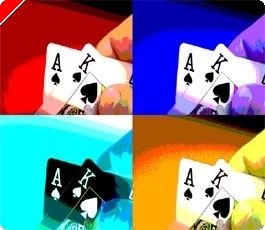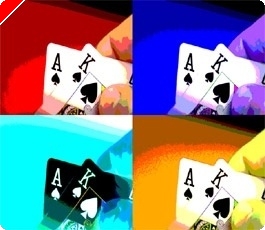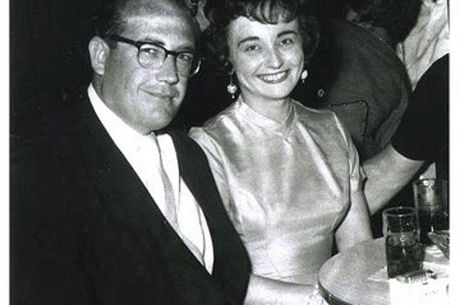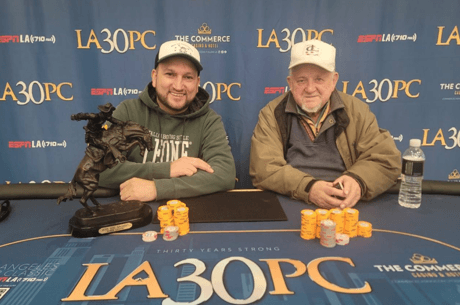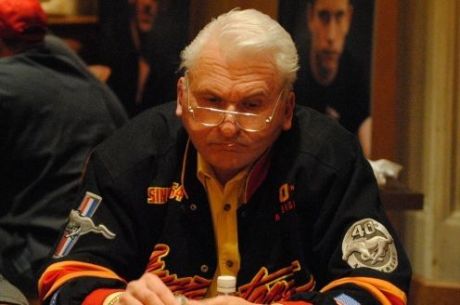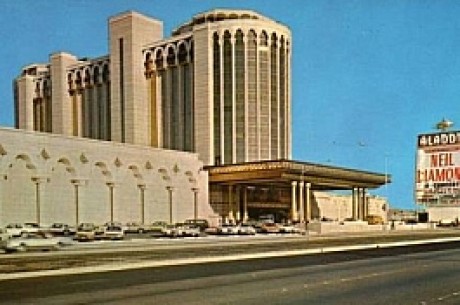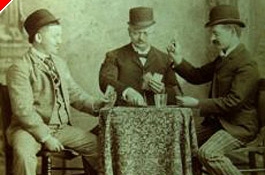From the Poker Vaults: The History of the WSOP’s Payout Structure
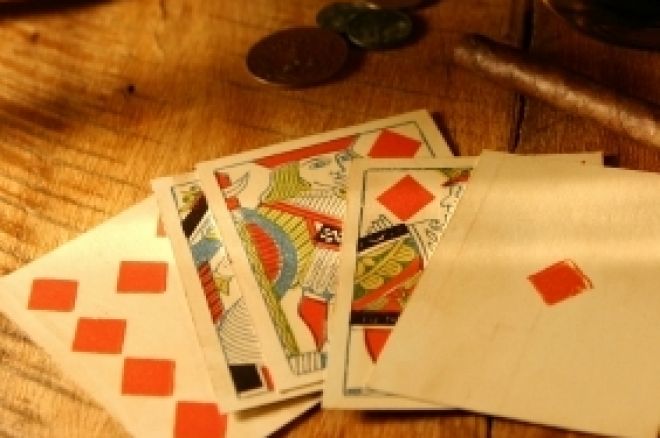
In an era when the main event of the World Series of Poker
routinely pays the top 600-plus finishers, it’s hard to imagine the event ever being winner-take-all. From 1970 to 1977, however, that was the case. Well, sort of. A genius at generating publicity, Benny Binion publicly advertised his little poker tournament as being winner-take-all, believing it would give the event the sort of cachet a world championship deserved. Privately, however, he had no problem with the fact that the players nearly always negotiated a more equitable distribution of the prize money.
Interestingly, such deal-making usually didn’t take place at the final table as so often happens today. Instead, before the tournament even started the players voted on how many ways the prize pool should be split and when the field got whittled down to that number the players took a break. While they stretched their legs or grabbed a bite to eat, the Horseshoe Casino’s floor staff counted the number of chips each player possessed under the pretense of relaying that information to the television crews filming the event. When the players returned to the table, they resumed playing for the title using 25 percent of their previous chips stacks. The other 75 percent they pocketed and later exchanged for cash at the cage.
This was the standard operating procedure for the prize distribution at the World Series of Poker until just after the 1977 tournament when the idea of purporting to be a winner-take-all event, when that was not in fact the case, suddenly became grounds for a legal investigation. The federal broadcasting law that outlawed such a practice had been on the books ever since the scandal surrounding the rigging of the quiz show “Twenty One” erupted in 1957, but it had rarely, if ever, been enforced.
Then, in the mid-1970s, CBS began broadcasting a series of alleged $100,000, winner-take-all tennis tournaments at Caesars Palace in Las Vegas between such top tennis players as Rod Laver and Jimmy Connors. The winner of these matches was supposed to take home the entire purse, but the players began splitting the prize money no matter who won. When they finally confessed what they’d done, the ensuing scandal put CBS squarely on the hot seat. The network issued a public apology on its Sports Spectacular show and paid the FCC a large fine, but those responses barely dimmed the spotlight thrust upon it. Every sporting event it broadcast was thoroughly scrutinized, but none more than the World Series of Poker.
As Crandell Addington recalls, “The feds found out that the tennis players had split this prize money so they got after CBS. The next thing that happened was they said, ‘Hell, CBS is broadcasting these gamblers. They’re bound to be doing that too.’ They started investigating us, but we just said, ‘We don’t know what you’re talking about.’”
Knowing it was only a matter of time before federal investigators found out about the under-the-table dealmaking that routinely took place during his tournament, Benny Binion gathered all the poker players who regularly attended the World Series. “If you guys want to keep splitting the prize money,” he told them, “we’re going to have to disclose it next year [1978]. What we’ll do is we’ll pay the top five places. That way it will be fully disclosed.”
Binion introduced the new payout structure at the 1978 World Series of Poker. The top five finishers in that year’s main event all received a payout. The odd man out was Ken “Top Hat” Smith, a chess master from Dallas who had been Bobby Fischer’s second in the match against Boris Spassky in Reykjavik. An hour after Smith’s elimination, Louis Hunsucker, a forty-four-year-old bookmaker from Houston, completed a gutshot straight draw to knock out Jesse Alto. One of the unluckiest players in World Series history—he made ten final tables during his career but never won a bracelet — Alto finally caught a break. Whereas he might not have earned a cent for his fifth-place finish just a year before, in 1978 he took home $21,000 thanks to the new payout structure.
Binion continued to pay the top five finishers in the main event until 1981, at which point he began paying the last nine players. This arrangement seemed to make more sense as it coincided with the number of players who made the final table, and it lasted until 1986 when a jump in the number of entrants to 141 forced Binion to expand the payout structure once again.
As the field continued to grow each year, so too did the number of players who got paid. The greatest leap came in response to Chris Moneymaker’s shocking victory in 2003. The following year, 225 players got paid, quite a jump from the 63 players who got paid the year before. In 2005, the number swelled to 560, then a record 873 in 2006, a number that’s hard for anyone who played in the event during the first eight years of its existence to comprehend. Back in those days, it was winner-take-all. Well, sort of.
Join the action and grab your PokerStars Bonus Code from PokerNews.com - The number one source for poker News & Information on the internet.

